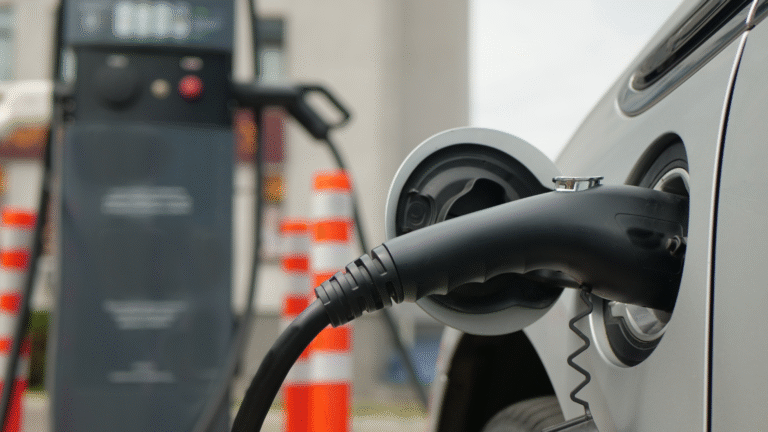If you’ve ever watched your EV’s charging progress and noticed how fast it charges at first—only to slow down dramatically near the end—you’re not imagining things. This is a fundamental part of how electric vehicle (EV) batteries charge, and it all comes down to what’s called the “charging curve.”
Understanding the charging curve is essential for making informed decisions about when and where to charge your EV. It also explains why so many fast chargers (and EV manufacturers) recommend charging up to 80% rather than all the way to 100%.
Let’s unpack the science—and practicality—behind charging curves.
Table of Contents
- What Is a Charging Curve?
- Why Charging Starts Fast, Then Slows
- The 0–80% Sweet Spot
- Fast Charging vs. Slow Charging Curves
- How Battery Health and Temperature Play a Role
- Optimising Your Charging Habits
- Conclusion
1. What Is a Charging Curve?
A charging curve refers to how the speed (in kW) of charging changes as your EV battery fills up. Unlike pouring fuel into a petrol car at a constant rate, EVs charge in phases:
- Rapid at first
- Slows down around 60–80%
- Trickles near 100%
Each EV model has its own unique charging curve, influenced by battery chemistry, cooling systems, and software.
2. Why Charging Starts Fast, Then Slows
It’s all about safety and battery preservation. Lithium-ion batteries—used in most EVs—can accept high rates of charge when they’re relatively empty. But as they get fuller, the battery management system (BMS) slows the charge to prevent overheating, overvoltage, and long-term degradation.
This tapering protects the battery but results in slower charging times as you approach 100%.
Think of it like filling a glass: you can pour quickly at first, but you slow down near the top to avoid spilling.
3. The 0–80% Sweet Spot
Many fast chargers advertise charging speeds “up to 350 kW,” but you’ll only see that rate during the initial part of the charge. That’s why most EVs and charging apps recommend stopping at 80%:
- Faster overall charge time
- Less strain on the battery
- More efficient use of public chargers
Charging from 80% to 100% can sometimes take as long as 10% to 80%, depending on the vehicle.
4. Fast Charging vs. Slow Charging Curves
The charging curve looks different depending on whether you’re using:
- ⚡ DC Fast Charging (50–350 kW): Quick rise, steep drop after 50–70%
- 🔌 AC Charging (7–22 kW): More consistent and linear over time
DC fast charging is great for road trips and top-ups. But for overnight charging at home, AC’s slower curve is easier on your battery.
5. How Battery Health and Temperature Play a Role
Temperature heavily influences charging curves. In cold conditions, charging can start slower until the battery warms up. Some EVs even pre-condition the battery en route to a charger to optimise speed.
Battery health also matters. Over time, a degraded battery may charge more slowly and have a flatter curve due to reduced capacity and altered cell chemistry.
6. Optimising Your Charging Habits
To get the most from your EV and preserve battery life:
- Charge to 80% for daily use; reserve 100% for trips
- Pre-condition your battery before fast charging if your car allows it
- Use slower overnight AC charging when convenient
- Avoid “yo-yoing” between 0% and 100% often
- Monitor your charging curve via your EV app (many provide real-time data)
7. Conclusion
Charging an EV isn’t just plug-and-go—especially if you’re aiming for maximum efficiency and battery longevity. Understanding charging curves helps you plan smarter, charge faster, and keep your EV healthy for years to come.
8. Meta Description
Ever wonder why your EV charges quickly at first, then slows down? Learn how charging curves work and why 0–80% is the sweet spot for speed and battery health.
